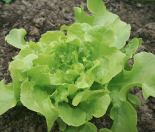One of the greatest gifts we can give our children is the ability to be mindful – to be still and be in the moment. Learn about mindfulness and how to bring it into your home – by using simple breathing and focusing exercises.
Find some peace amidst the chaos
The hectic world we live in is something many adults find difficult to cope with at times.
But what about the impact an ever-increasing drive to ‘succeed’ is having on our children?
A world of constant action, noise, and expectations can deprive children of the quiet time they need to grow and learn. It can be a baffling and scary thing to navigate.
Mindfulness can help children to:
- pause and find some peace amidst the chaos
- learn to turn their attention inwards and use of all the valuable resources they have inside themselves.
Mindfulness has been shown to benefit our brains to such an extent that we can feel calmer, more aware, have an increased ability to focus and concentrate, remember things better and feel happier.” Grant Rix, NZ Mental Health Foundation Press Release, July 2012.
Train your mind and stop habitual thinking
Mindfulness is a non-religious, evidence-based, psychological approach to mind training. Jon Kabat Zinn, Professor Emeritus at the University of Massachusetts Medical School, describes it as:
Paying attention in a particular way: on purpose, in the present moment, and non-judgmentally.
Mindfulness increases our ability to be present and aware. By learning to participate fully in the present moment without thinking about the past or worrying about the future, we can become less reactive and can break free of our habitual ways of reacting. We can respond consciously to the challenges life throws at us rather than react out of anger, fear or anxiety.
Reduce stress and improve your wellbeing
Mindfulness has significant benefits for adults and children alike – and growing evidence to support its effectiveness. Some of these proven benefits include:
- less stress and anxiety
- an increased sense of joy and wellbeing
- improved resilience
- greater focus
- better relationships
- enhanced emotional intelligence
- improved sleep.
Stop and breathe, and improve emotional wellness
Mindfulness is rapidly increasing in popularity around the world, and has made its way into mainstream medicine, education, and the workplace. Many New Zealand schools are now seeing the need to place emotional wellness of children high on their priorities.
Bring mindfulness into your home
Bringing mindfulness into your home can be simple. As parents, we can model mindful behaviour for our children. We can do this by quietly taking the time to be aware of the present moment, really noticing what we think and feel, and identifying our emotions for what they are. Engaging all five senses to become more aware of and appreciate our surroundings is a powerful mindfulness tool.
Here are some practical things to do at home with your children, to help them (and you) become more mindful.
Teddy bear breathing
Place a teddy bear on your child’s tummy while they’re lying down. Encourage your child to breathe in and out, and to notice their tummy rise and the teddy move up, then down as they breathe out. By ‘giving teddy a ride’, your child learns to relax and focus. This is great to do if your child feels stressed, anxious or is struggling to calm down and sleep.
Mindful walking
Take the time to walk in nature with your child, simply noticing your surroundings. It’s amazing what you notice when you take the time. Discuss with your child your experience of what you see, hear, smell, and feel as you walk.
Make and use a Mind Jar
To make a Mind Jar, put 2 cups of hot water and about 2 tablespoons of glitter glue in a 600ml jar (adjust proportions for different sized jars). Add an extra tablespoon or 2 of fine glitter. Shake until the glue dissolves. You can add food colouring or leave it clear. You can also change the proportion of glitter glue to water if you’d like the glitter to settle more or less slowly. For younger children, you may want to use a plastic jar.
To use the Mind Jar, ask your child to give it a shake. Ask them to imagine the glitter being the busy thoughts going through their mind when something stressful happens. Watch as the glitter slowly settles and ask your child to notice how that is like their thinking. When the glitter settles at the bottom of the jar, the water is clear, just as our minds should be. When we’re calm, we can focus again. ‘Shaking the Mind Jar’ will allow your child to pause between experience and reaction, and give them the chance to respond to something stressful in a healthier, calmer way.
Learn how to clear your mind
As a mindfulness coach and teacher, I’ve found it amazing how quickly children embrace the concept. Here are some comments from children I’ve taught to use the techniques of mindfulness:
“I was losing my tennis match so badly that I stopped and did my mindful breathing so I could clear my mind. I went on to win the game.”
“Now when I feel angry I can stop and breathe before I do something stupid.”
“Now when I get anxious I know why, sometimes I look at my mindful jar or focus on my breathing and it’s not such a big deal anymore.”
If you want to incorporate your children in your path towards mindfulness, check out our article 3 breathing techniques for teaching children mindfulness.






